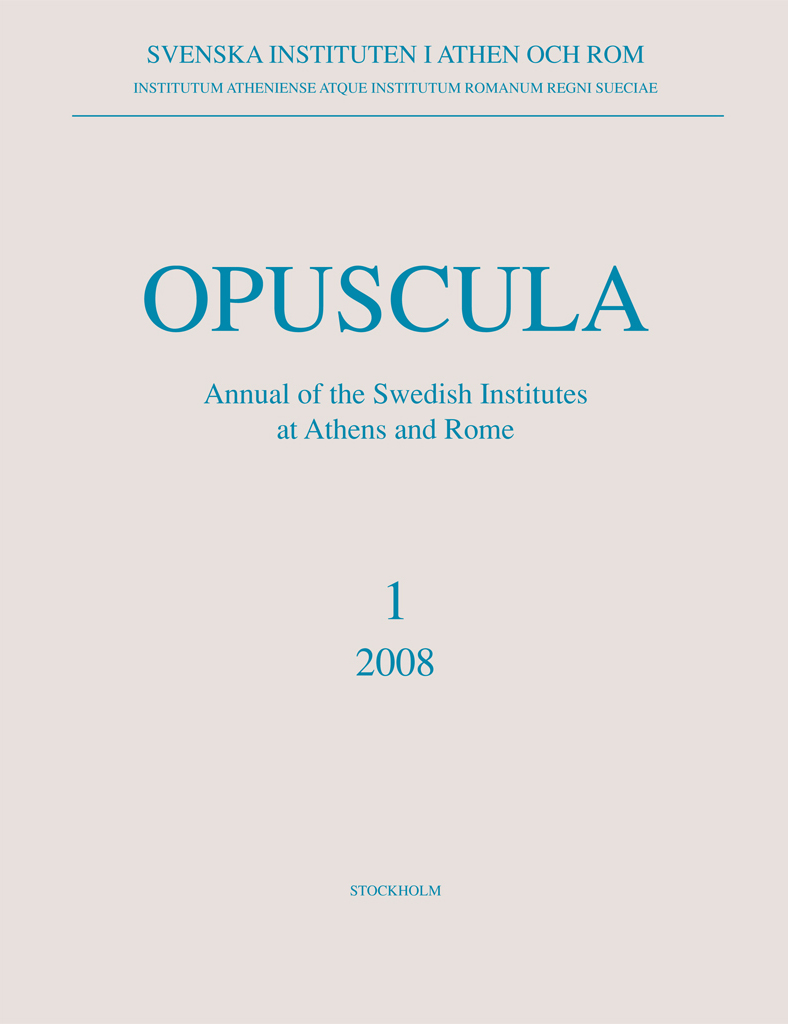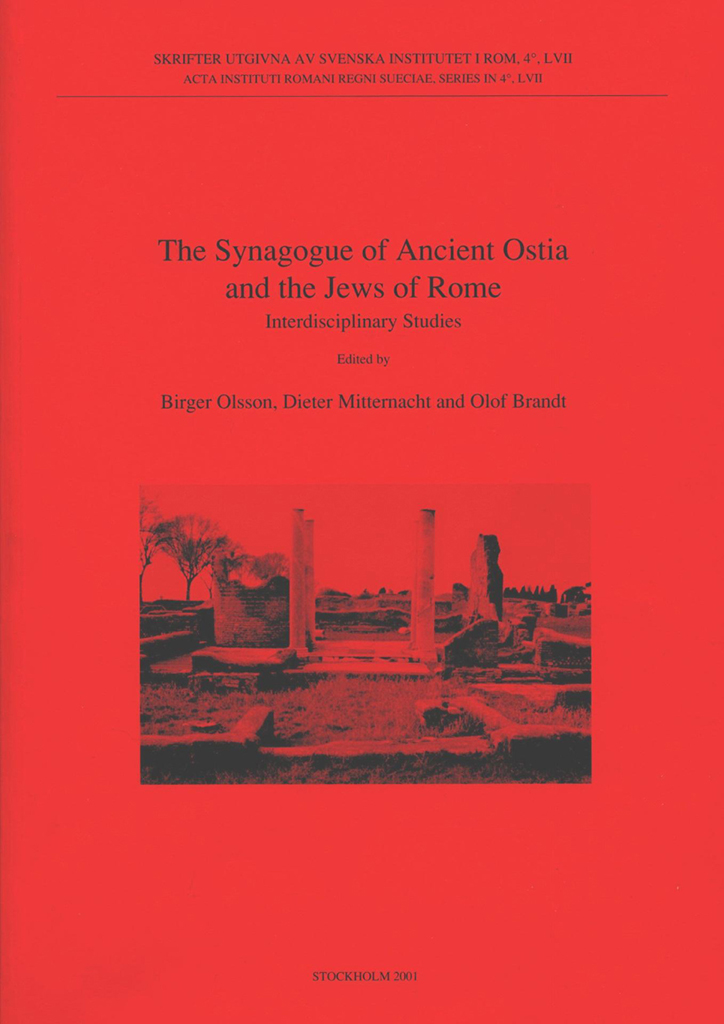Opuscula 1 (2008) is out of print. Available for free download at Bokorder.se. Used copies might be available at Amazon.com and Amazon.de. I muri trasversali di Santa Croce in Gerusalemme e la sinagoga di Ostia By Olof Brandt Abstract The reasons behind the unusual internal division of the first phase of the church of Santa Croce in Gerusalemme have never been fully explained. This paper proposes an explanation of the phenomenon with the help of a comparison with the Synagogue of Ostia Antica. Bibliographical information Olof Brandt, ‘I muri trasversali di Santa Croce in Gerusalemme e la sinagoga di Ostia’, Opuscula. Annual of the Swedish Institutes at Athens and Rome (OpAthRom) 1, 155–166. Stockholm 2008. ISSN: 2000-0898. ISBN: 978-91-977798-0-7. Softcover, 198 pages. https://doi.org/10.30549/opathrom-01-12
Distributed by Astrom Editions. The Synagogue of Ancient Ostia and the Jews of Rome. Interdisciplinary Studies Edited by Birger Olsson, Dieter Mitternacht & Olof Brandt In March of 1997 a research project on the ancient synagogue began at Lund University, Sweden, continuing a tradition of research that has its roots in the 1930s. The project’s title “The Ancient Synagogue: Birthplace of Two World Religions” suggests that Judaism and Christianity existed for a time in close proximity to each other and were shaped by the same particular milieu within the ancient world, namely, the synagogue. The synagogue in ancient Ostia was chosen as an initial case study, since there is evidence that it was built during the first century CE and consequently is one of the earlier synagogues in the Roman world to have been excavated. Olof Brandt presents for the first time a more extensive description of the area outside the city walls where the synagogue was built. Anders Runesson surveys all the material that has been published about Ostia in order to make a new reconstruction of the synagogue’s history in Ostia. Magnus Zetterholm attempts, primarily with the aid of interpretative theories and general considerations, to sketch the relations…


